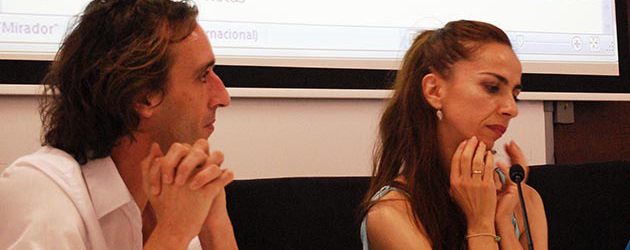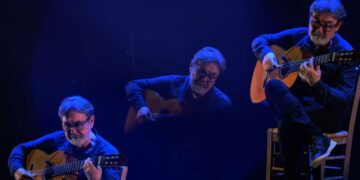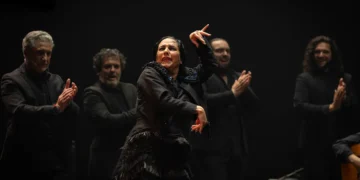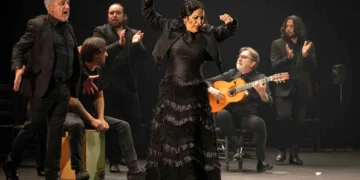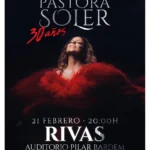Text: Estela Zatania
Collaboration: Clara Mora
Photos: E. Zatania, Concha Fernández, Rosario Heredia y Ana Palma
At the Carmona branch of the Seville University Pablo Olavide, a three-day cross-disciplinary study revolved around the evolution and history of flamenco dance.
Over the course of three intense days, investigators, teachers, historians, professionals and journalists participated in round-table discussions, lectures and debates within the framework of a pleasant atmosphere at the Casa de los Briones in the historic quarter of Carmona. A brave initiative with the goal of continuity, organized by journalist and investigator Ildefonso Vergara of Cadena Ser radio, and cultural coordinator Inmaculada Bustos.
The program, which gave validated university credits, also offered a dance performance at the Teatro Cerezo, «Sevilla«, by young Málaga dancer Luisa Palicio, winner of the award for Best Newcomer at the 2015 Festival de Jerez.
Eva Yerbabuena opened the program with her talk. The popular dancer from Granada declared that «flamenco is a profession, and between all of us we have to defend our culture». She pointed out that relatives of hers still consider what she does as little more than a big party.
Dance historian Rocío Plaza gave a detailed rundown of the historical background of the preflamenco era, and said that in the nineteenth century Europeans called everything «Spanish dance». She quoted the words of writer and traveler Charles Daviller: «Seville is a melting pot where many styles come together». Rocío also pointed out that flamenco did not really make its appearance until the end of the 19th century.
Flamenco expert Pepa Sánchez, daughter of legendary singer Naranjito de Triana, talked about flamenco in Triana, «Entre la Tradición y la Hibridación», and Miguel Ángel Berlanga, musicologist at the University of Granada, explained the various meanings of the word «jaleo», in addition to speaking about the «bailes de candil». After his talk, the documentary «Triana Pura y Pura» was projected.
Journalist Marta Carrasco dealt with the topic «El Siglo XX, Golden Age of Dance», and from the University of Sevilla, Eulalia de Pablo explored the historic role of women in flamenco dance.
After a roundtable discussion with journalists Juan Vergillos and Estela Zatania, as well as dancer and choreographer Rafaela Carrasco, to debate the current state of dance, writer Génesis García Gómez presented her topic «Los Símbolos de la Libertad en el Baile Flamenco».
Also in the afternoon of the second day, podologist José Manuel Castillo López spoke about foot problems of flamenco dancers. Following this, a wine tasting was offered by oenologist and guitarist Simbad Romero Andrés, who set the mood for his explanations with his own guitar playing.
Friday morning, Rosalía Gómez spoke about dance as an abstract form, and its transition to the stage. Pedro Javier Millán Barros of the investigative group Literatura, Transtextualidad y Nuevas Tecnologias from the University of Sevilla, gave an interesting talk about semiotics, the use of color, mirrors, lighting, etc. in filmed flamenco, using examples from Carlos Saura's movies.
The program concluded with a round-table discussion with dancers Rubén Olmo and Isabel Bayón, directed by Francisco Perujo to deal with communication and the teaching of flamenco.
Descubre más desde Revista DeFlamenco.com
Suscríbete y recibe las últimas entradas en tu correo electrónico.


